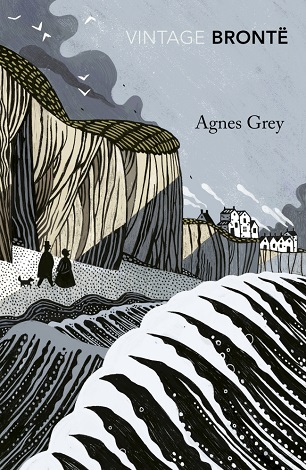My latest Brontë blog post is a day earlier than usual, so don’t worry – you haven’t slept in and missed the England football match, Wimbledon tennis or Michael McIntyre’s ‘The Wheel’. I’m writing and posting on Saturday this week because on Sunday I’m appearing at the Bradford Literature Festival, at 1pm at the grand Midland Hotel – a location once known to Branwell Brontë.

You can buy tickets by clicking on this link, and it would be lovely to see you there. It’s a question and answer session, and no doubt we’ll also have time to mention Charlotte, Emily and other Brontë-related subjects. The main subject however, is Anne Brontë and her first novel Agnes Grey, and the parallels between Anne’s fiction and her life. We will look at a few brief examples in today’s post.
Agnes Grey was the debut novel of Anne Brontë – published in December 1847 (alongside her beloved sister Emily Brontë’s Wuthering Heights), it is believed that Anne may have been referring to an early iteration of the book in her diary paper of July 1845, in which she wrote: “I have begun the third volume of passages in the life of an individual. I wish I had finished it.” If this is an indeed an early draft, then it would make it the earliest of the Brontë novels now in print.
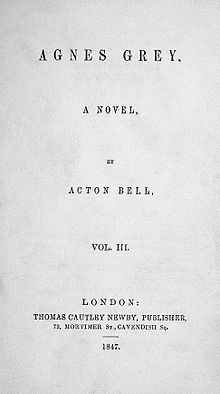
The book as it is today is in three distinct sections, so it would suit a three volume treatment as mentioned in the diary paper, although it is a short book. It is very clearly, in my opinion, autobiographical in nature in many instances. When I was re-reading the book whilst writing my Anne biography In Search Of Anne Brontë, I got a cheap edition and highlighted passages which seemed to be at least partly autobiographical in nature (please note that I don’t generally approve of writing in books, or of turning page corners down); I found sixty such passages. Looking back through the self same edition this week I find that I’m not quite as confident on some of the highlighted passages, but that there are other sections I didn’t highlight which seem to me be based on Anne’s life and experiences.
We don’t have to look far for instances of autobiographical information; on the very first page Agnes, the eponymous narrator, tell us: “My father was a clergyman of the north of England.” If we take ‘of’ to mean living in, rather than born in, then this also describes Anne Brontë herself of course.
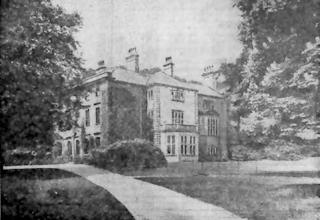
In that same opening chapter, Agnes describes how her mother had come from much wealthier stock, and how she is one of six children. Both of these match the Brontë facts precisely. Agnes decides to become a governess, but because she is the youngest sibling her parents do not think her capable of looking after others – she will always be the baby of the family to them. We can easily imagine that Anne faced the same problems when she two announced her decision to become a governess.
This book is not only full of autobiographical signposts, it also paints a vivid portrait of life as a governess. Agnes has two positions, in the first she has children who are unruly and whose parents treat her with disdain. In the second, the children are much less vicious, but Agnes is dismayed at the way their mother is preparing them for society weddings without considering love.
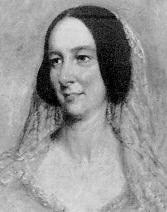
These two episodes seem very closely related to Anne’s time as governess to the Ingham family of Blake Hall and the Robinson family of Thorp Green Hall. Indeed, I believe writing the first section may have been a cathartic experience for Anne as it allowed her to get revenge, on paper, on the horrors that she had experienced as governess to the Inghams. Agnes lasts a matter of months as governess to the Bloomfields; in real life Anne was dismissed mere months after becoming governess to the Ingham family – her position deemed untenable after the parents entered the schoolroom and found that Anne had tied one of her charges to a table leg so she could write poetry in peace.
The most moving element of the novel to me is the ever so sweet romance between Agnes and Edward Weston, the assistant curate near Horton Lodge, based upon Thorp Green Hall. I have no doubt that Weston is a near facsimile, in character and actions, of William Weightman – Anne’s eternal love who was ripped from life far too soon.
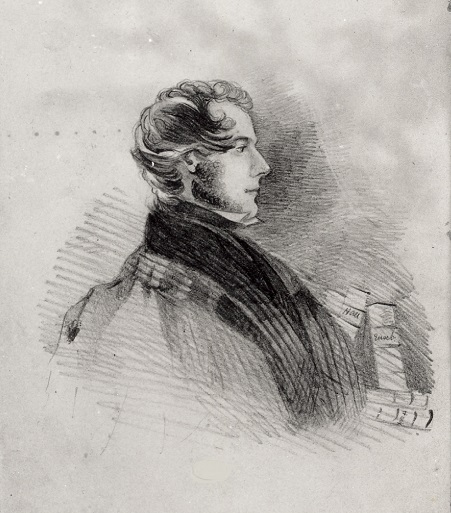
Weightman’s death had destroyed Anne’s dreams – she could have enjoyed a mutual love with him, have married him – after all what could be more natural for an assistant curate than to marry the daughter of the more senior clergyman he assisted? Real life killed the dream Anne dreamed, but she resurrected it on paper and gave herself the happy ending she had always wanted.
I will be talking about this and much more tomorrow at the Bradford Literature Festival. If you can’t make it, do pick up a copy of Agnes Grey – it’s a fabulous read. I’m firmly in the camp of the great Irish novelist George Moore who said of it: “Agnes Grey is the most perfect prose narrative in English literature… a narrative simple and beautiful as a muslin dress… We know that we are reading a masterpiece. Nothing short of genius could have set them before us so plainly and yet with restraint.”
Anne herself is quite candid about the nature of her novel right at its beginning: “All true histories contain instruction… shielded by my own obscurity, and by the lapse of years, and a few fictitious names, I do not fear to venture; and will candidly lay before the public what I would not disclose to the most intimate friend.”
We can all be grateful that Anne did exactly that. I’m off now to watch the England match, er I mean to prepare for my talk, but I hope to see you next Sunday for another new Brontë blog post.
